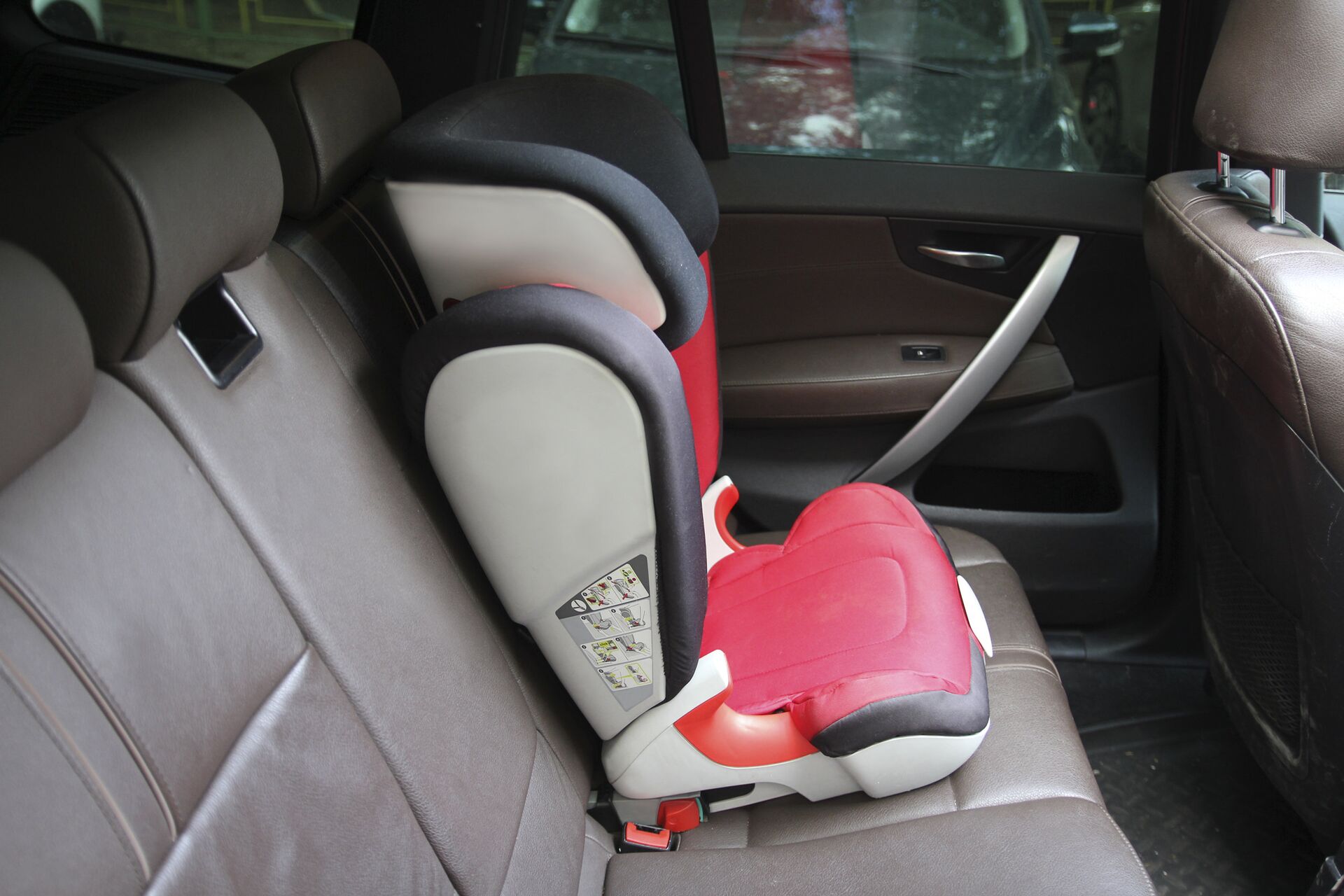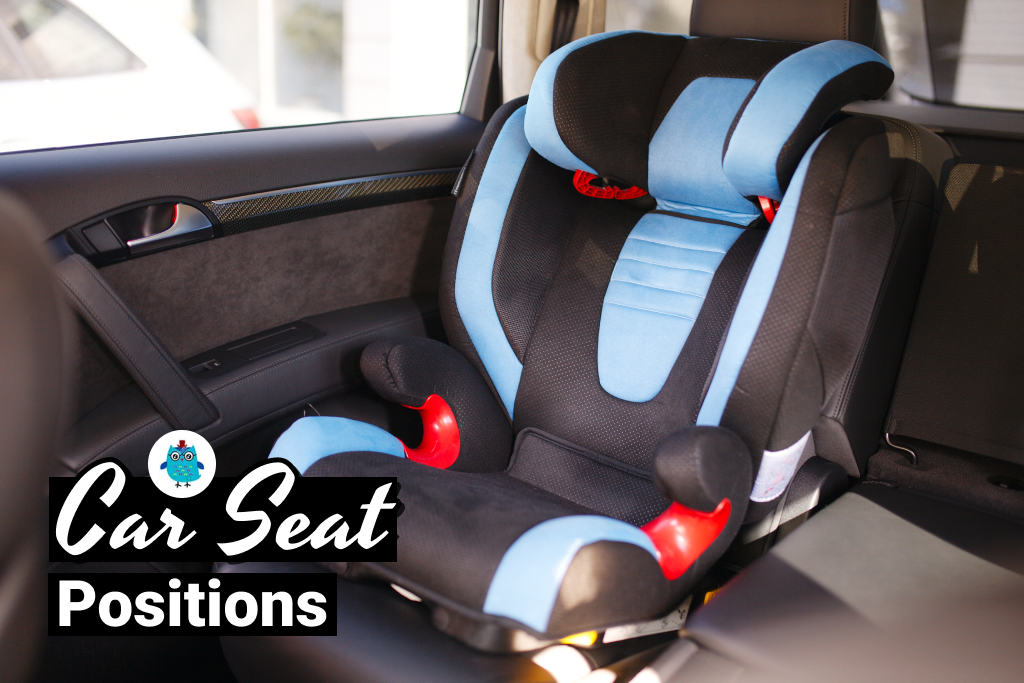We can control how we drive but can’t control other drivers. That’s where the safety measures we take, like correctly installing a car seat, come into play.
It’s not just about simply having a car seat; its placement in your vehicle plays a crucial role in maximizing its protective function.
The ideal location for a car seat is the back seat’s middle position due to its high safety profile. If this isn’t practical, the rear seat’s passenger side or the third row (if correctly installed) are safe alternatives. Under no circumstances should a car seat be placed in the front row due to airbag risks.
I’ll dive into the advantages and disadvantages of all the different car seat positions so you can make informed decisions about where to place your child’s car seat.
Let’s keep our most precious cargo as safe as possible.
If you’re looking for genuine reviews from real parents to find the best car seat for your baby, look no further. Take a look at my curated list of the top car seats for babies under 35 pounds.
Which Location Should You Put the Car Seat?
When I first brought my oldest child home, instinctively, I installed the car seat behind the driver’s seat. It seemed the right thing to do; after all, I’d be right there, just an arm’s reach away. However, after a week, I realized that location was not the ideal setup.
In my quest for the safest car seat spot for my precious little baby, I have considered all the possibilities: driver’s side, passenger’s side, middle seat, and even the often-forgotten third row. Each location comes with its own set of advantages and potential pitfalls. I’ve had quite a few interesting experiences trying to install car seats in various spots.
Let’s go into the specifics of each position, guided by expert opinions and practical realities.
Driver Side: Should Car Seat Go Behind The Driver?
- Familiarity: As drivers, we’re accustomed to using the rear-view mirror to glance at the traffic behind. With the car seat behind us, it’s more intuitive to quickly check on our little one without diverting too much attention from the road.
- Ease of access: On the driver’s side, getting the child in and out of the car when parked on the side of a street is easier. It’s also handy when you’re dropping off your child alone.
- Limited visibility: While it’s somewhat convenient, the truth is that it’s quite difficult to get a good view of your child through the rear-view mirror while focusing on driving.
- Potential safety concerns: Studies, including one from the National Highway Traffic Safety Administration, have shown that the passenger side is slightly safer than the driver side in the event of a collision. This is primarily because we naturally swerve to protect our side during an unexpected event.
In short, the driver’s side can be a practical choice for car seat placement, especially in terms of familiarity for the driver and ease of access when parking. However, visibility can be limited, and in terms of safety, studies suggest that the passenger side may offer slight advantages in certain collision scenarios.
After much thought and trial and error with the driver’s side, I experimented with placing my little one’s car seat behind the passenger seat.
Passenger Side: Is the Passenger Side Better for Car Seat?
- Enhanced Visibility: I immediately noticed that seeing my child in the rear-view mirror was easier when the seat was on the passenger side. It provided a better angle, and I was less distracted while driving.
- Increased Safety: The National Highway Traffic Safety Administration suggests that the passenger side might be slightly safer than the driver side in certain collision scenarios. This is due to our natural instinct to protect our side while driving.
- Accessibility issues: When parked on the street, getting your child in and out from the passenger side can be tricky, especially when traffic is zooming by.
- Reduced convenience: If you’re dropping off your child most of the time, you’ll have to move around the car each time, which can be inconvenient in tight parking spaces or inclement weather.
The increased visibility and potential for slightly better protection in case of a collision made me more comfortable with this choice.
Having tried both the driver and passenger sides, my curiosity naturally led me to consider the middle seat. Some parents swear by it, while others aren’t fans. I decided to give it a shot, and here’s my take on it.
Middle Seat: Can Car Seats Go in the Middle Seat?
- Potentially Safer: Many experts, including those from the American Academy of Pediatrics, suggest that the middle of the back seat could be the safest spot in a car. It’s furthest from any potential impact during a side collision, making it an appealing option.
- Better Visibility: With the car seat in the middle, you have a clear line of sight from your rear-view mirror to your child without turning your head too much.
- Installation Challenges: I first noticed that installing a car seat in the middle can be trickier, especially if your car doesn’t have a dedicated middle seat latch system.
- Accessibility Issues: Getting your child in and out from the middle seat can be a bit of a logistical workout, especially in tighter parking spaces.
Suppose your car allows for a secure installation. In that case, the middle seat is a viable and potentially safer option for the car seat. However, the convenience factor takes a hit. Despite the initial challenges for my family, the middle seat ultimately offered the best balance of safety and visibility.
But wait, the exploration doesn’t end here! Let’s now consider some unconventional options: the front row and the third row.

Front Row: Is it Safe for Car Seats to Be in the Front?
- Airbag Risks: The front passenger seat has an inherent risk due to airbags. In the event of a collision, airbag deployment can cause serious harm to a child in a car seat. That’s a scary thought!
- Collision Vulnerability: The front seat is generally more vulnerable in a collision than the rear seat, which means it’s less safe for your little one.
- Visibility and Access: The only advantage I can think of is the ease of access and the ability to keep a close eye on your child. But let’s be honest. The risks far outweigh this benefit.
The National Highway Traffic Safety Administration (NHTSA) and the American Academy of Pediatrics both advise against placing a child’s car seat in the front row due to significant safety concerns, especially related to the potential impact of airbags.
If you’re like me, you might wonder: “Is that even allowed?” While not explicitly illegal at a national level, many states have laws requiring children of certain ages to be in the back seat.
However, the front passenger seat should only be used as a last resort and only if certain conditions are met, such as turning off the airbag if there’s a switch to do so. When considering this option, it’s crucial to refer to the car seat and vehicle manufacturers’ instructions, guidelines, and state laws and regulations.
In short, while it might be technically “allowed” in some circumstances, it is highly discouraged due to the significant safety risks. It’s always safer to place the child’s car seat in the vehicle’s back row.
What Is the Best Spot for Your Car Seat Type?
As our children grow and their car seats evolve, the question of the safest seat position remains in our minds. If you’re anything like me, you probably find yourself reassessing car seat placement with each new stage, and rightly so.
First and foremost, it’s worth noting that the car’s third and second rows are both good locations. However, there’s a slight edge in favor of the passenger side due to the better visibility it provides and the safe exit it ensures, especially in street parking situations.
Meanwhile, despite the thrill kids might find in riding shotgun, the front row is an area we need to be cautious about. Airbags, designed to save adults in collisions, can pose significant risks to children due to their intense force. Even if you can disable your airbag, avoiding front-row placement for child car seats is recommended.
Rear-Facing: Where Should Rear-facing Infant Safety Seats Be Placed?
We’ve all been there – staring down at the brand-new rear-facing car seat, wondering where it should go. This was exactly where I found myself when our first child was born. Let’s break down the ideal placement for these car seats.
- Middle Rear Seat: The American Academy of Pediatrics and the National Highway Traffic Safety Administration recommend placing rear-facing car seats in the middle of the back seat. Why, you ask? It’s generally the safest location in a crash because it’s furthest from potential impact.
- Rear Passenger or Driver Side: If the middle back seat isn’t feasible, placing the car seat on the rear passenger (ideally) or driver side is also acceptable. The passenger side is slightly safer than the driver’s side.
The take-home message is to keep your child in a rear-facing car seat in the back row, ideally in the middle, for as long as possible.
However, middle seat installation can sometimes be tricky, depending on your vehicle’s design and the specific car seat. Therefore the passenger side is totally fine for rear-facing seats.
Forward-Facing: Where Should They be Installed?
- Middle Rear Seat: Like with rear-facing seats, the center rear seat is often considered the safest spot for forward-facing car seats. It is the furthest from any potential impact in a crash. But again, make sure your car seat and vehicle are compatible with a middle seat installation.
- Rear Passenger or Driver Side: If the middle seat is not an option, installing the forward-facing car seat on either the rear passenger or driver side is a safe and acceptable choice. We opted for the passenger side when we transitioned my youngest into a forward-facing seat. This allowed me to glance back easily and respond to any immediate needs while my wife was driving.
Remember, the goal is always to ensure the car seat is installed securely, regardless of position. And once your child has outgrown their forward-facing car seat, it’s time to move on to the next phase – the booster seat.


